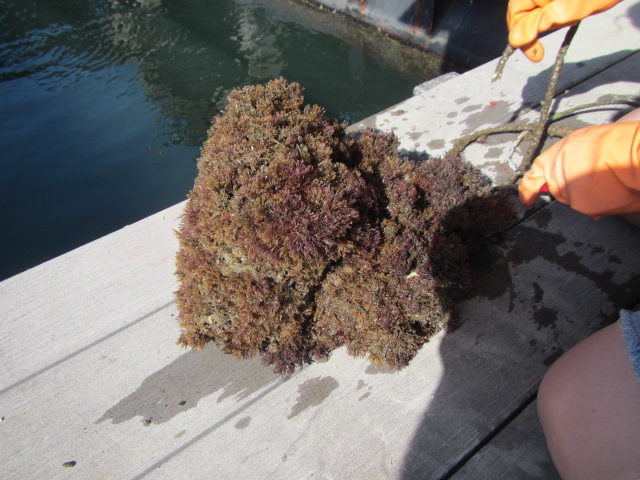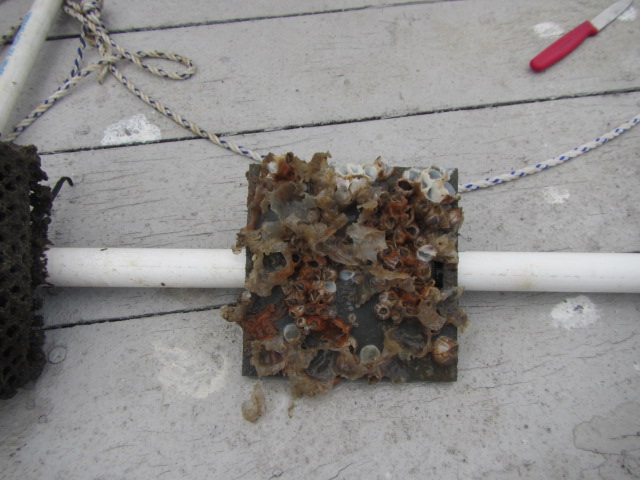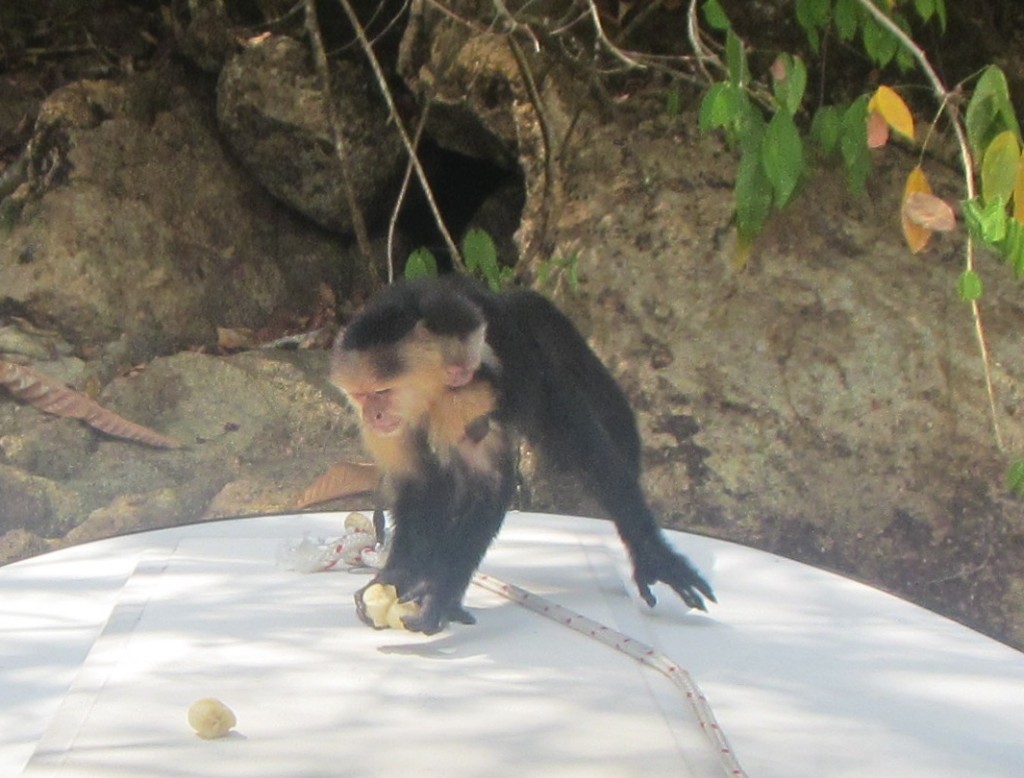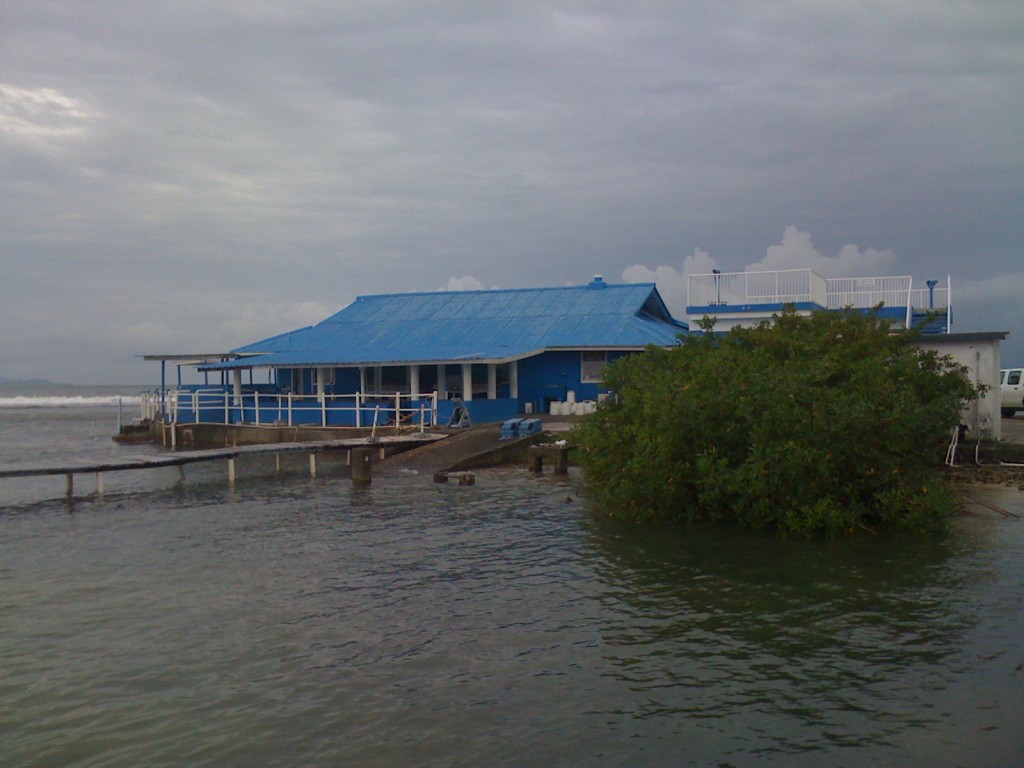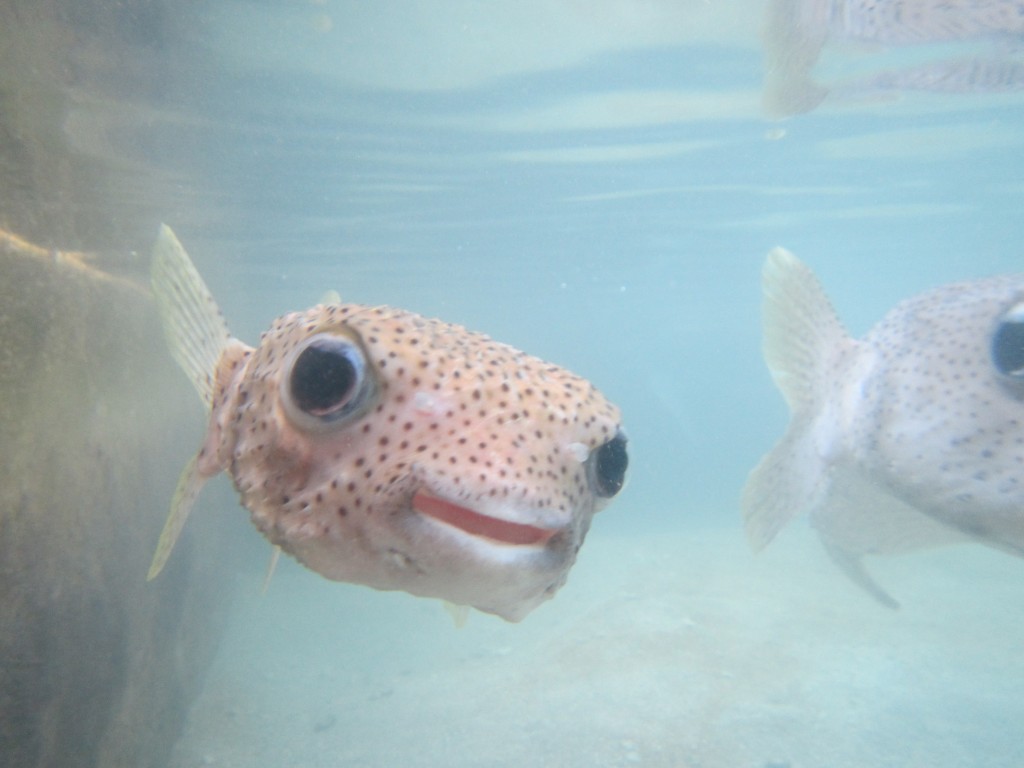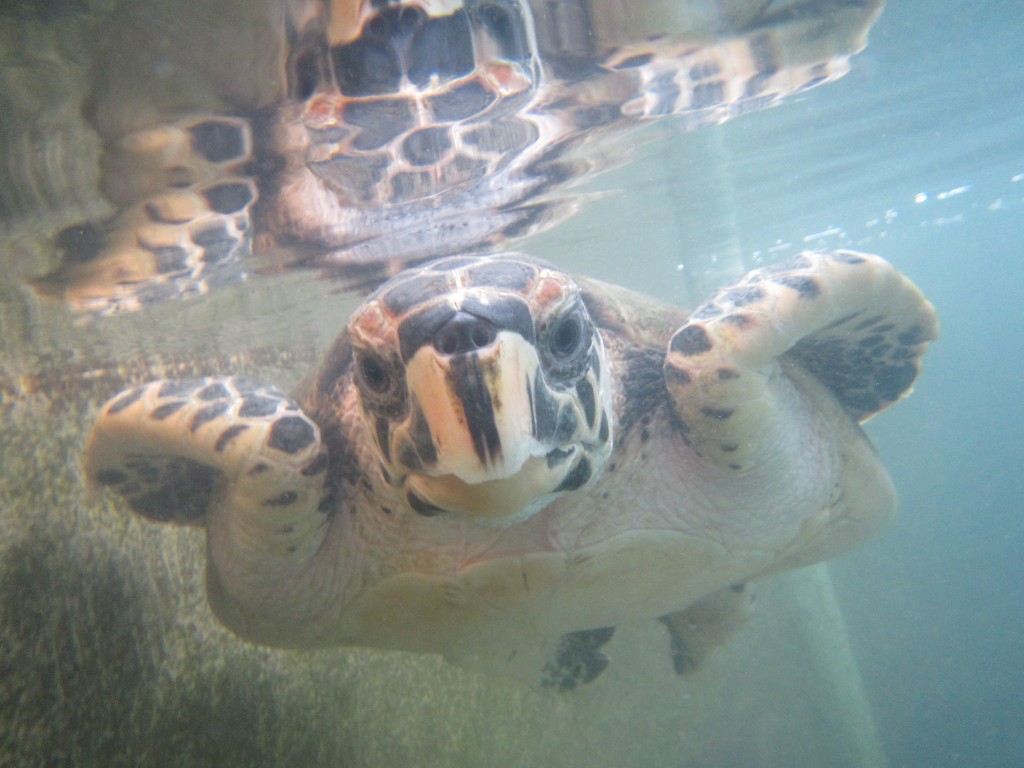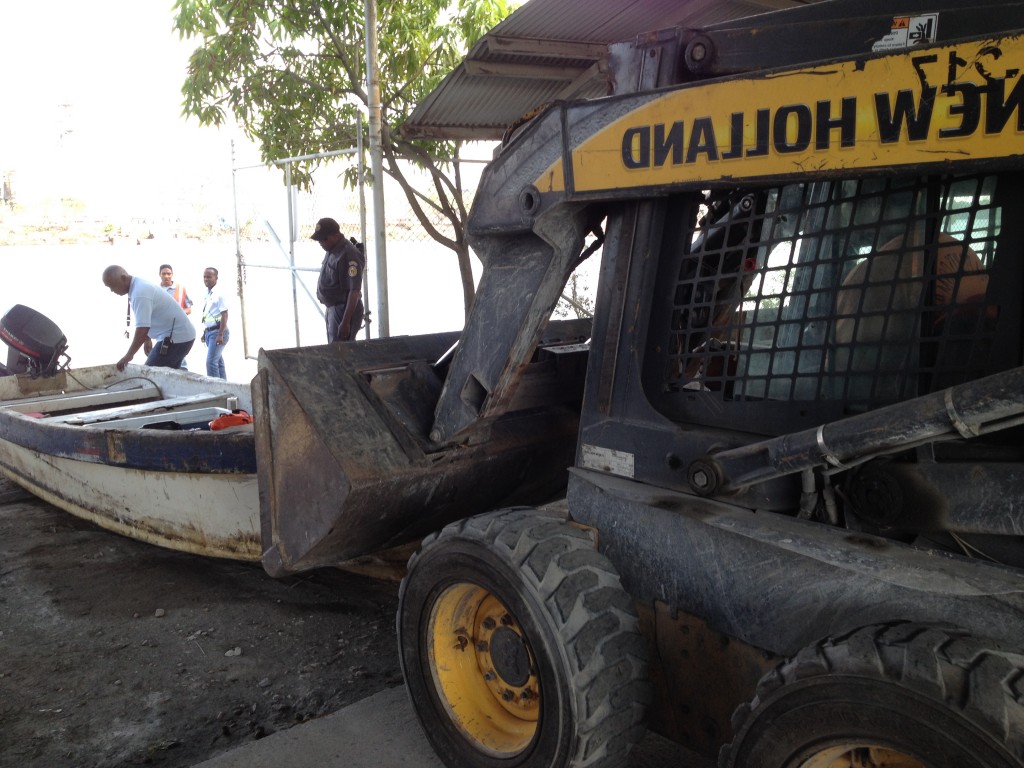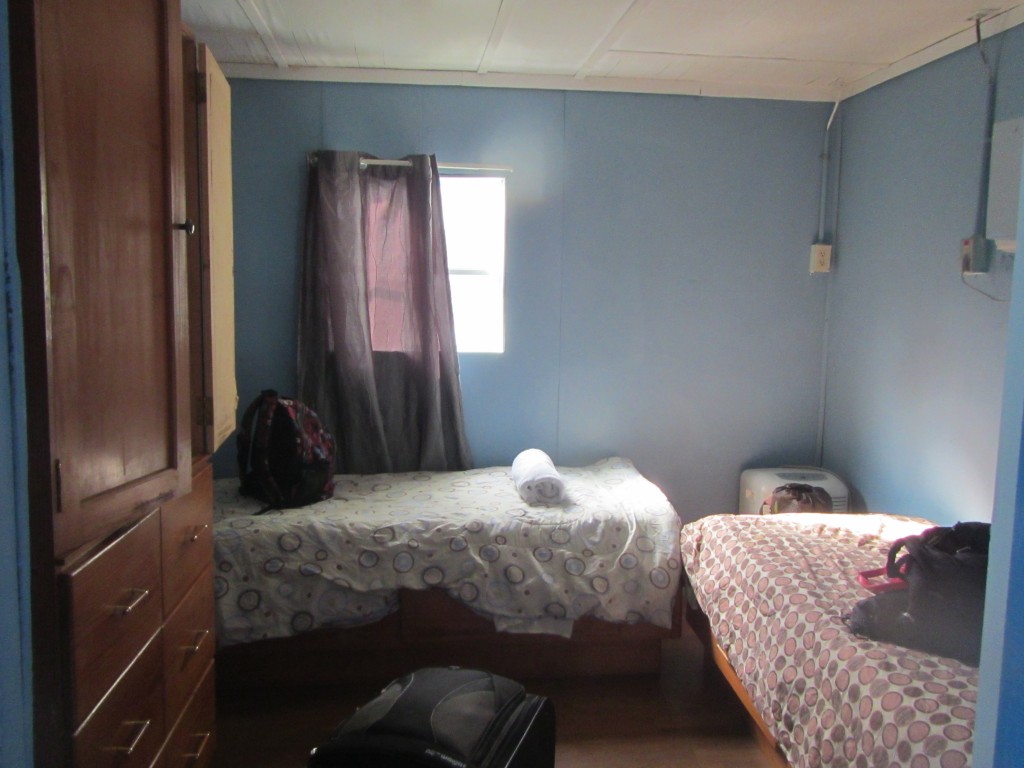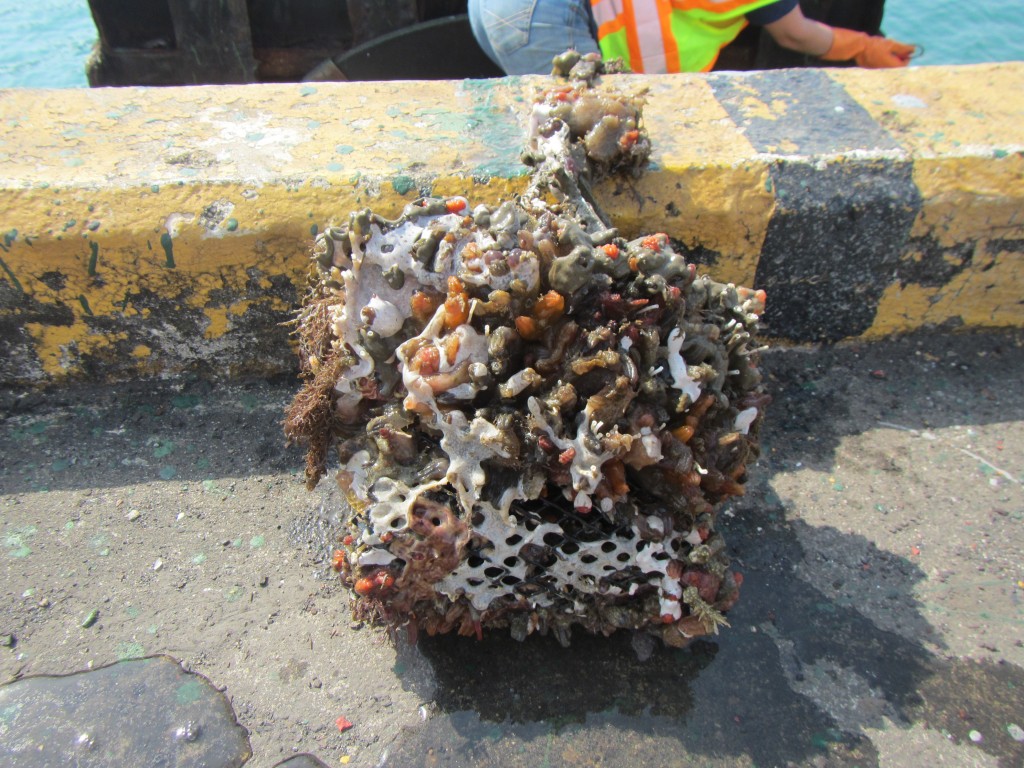Linda McCann is a marine biologist studying invasive species with the Smithsonian Environmental Research Center. This March she and three other researchers spent 17 days exploring marine life on both sides of Panama, at the Smithsonian Tropical Research Institute (STRI).
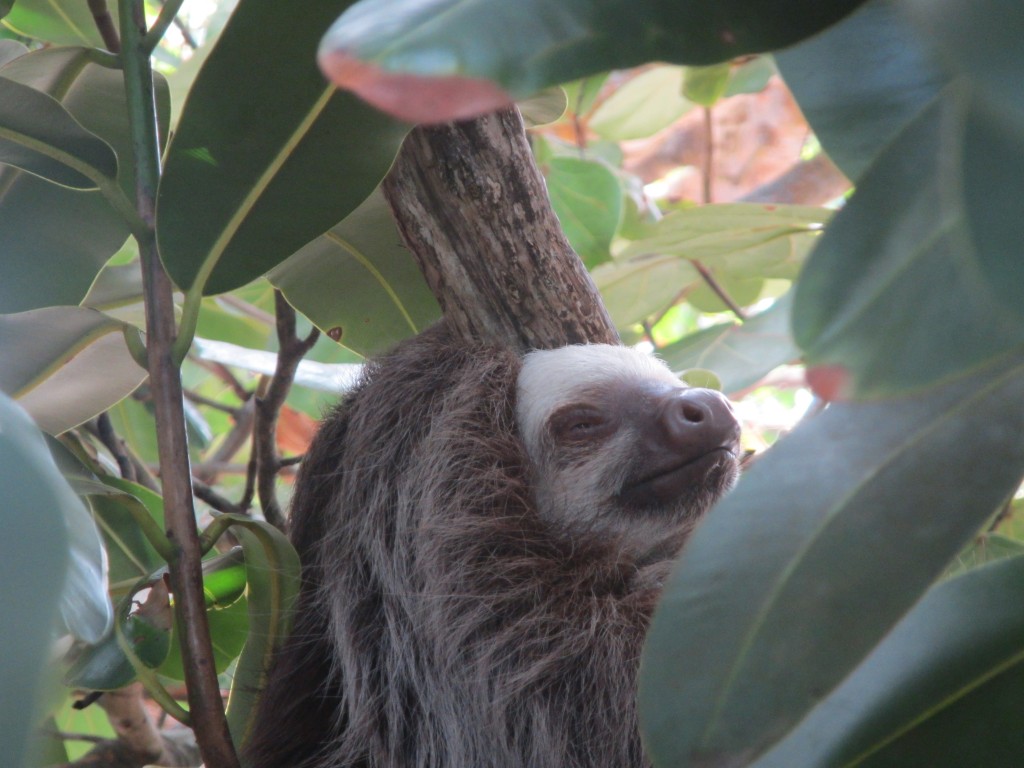
Sloth in Isla Galeta, near the Smithsonian’s marine station on the Panama Canal.
(Kristen Larson/SERC)
March 10
Got up at o-2:30 to catch a shuttle to the airport, after singing a concert the night before and not getting to bed until 12:30. Finally arrived at our lodging in Panama about 10:30 p.m., bleary-eyed but happy to be back in this special place!
March 11
Our first day. Usually we start out a bit slowly, shopping for food, getting our IDs at Tupper, getting set up, but today we dive right in. We collect samples from the STRI dock in Naos and begin the process of reacquainting ourselves with the species in Panama. Warmer water means we are looking at a whole different suite of species than we see back in San Fran or Chesapeake. The lab is on an island situated just outside the canal on the Pacific side.
March 12
We are now in the thick of things, so to speak. We are looking at organisms attached to plastic panels called settlement plates, a standard sampling methodology we use around the world. In addition to doing the standard surveys to look at diversity and species composition on both sides of the Panama Canal and search for invasives, we are doing a predation experiment. The design includes open plates (control), caged plates (predator exclusion) and partial caged plates (cage control). Twice as many caged plates were put out so that we can remove the cage and allow predation to occur on half of them. Next, we set up a go pro camera to document predators on film! To capture images during prime feeding times for fish (dawn and dusk), we arise early once again and start our day at 6:00! We are rewarded by seeing some of the fish predators feeding on the plates!
March 13
Ugh, we pulled in the caged treatments and they are full of tunicates! So many tunicates that I will see them in my dreams at night, I am sure. Miraculously, the “opened” caged treatments are a bit easier as they have been heavily munched on! The tunicates are a distant memory with only a small piece of the tunic remaining. Even the large barnacles are gone, with just jagged edges and the base left on the plate!
March 15
The plates are going well. We are now in the swing of things and it’s not taking us quite so long. We pushed hard yesterday and today we actually got home before dark (a first!).
March 16
Yippee. Day off! Need I say more?
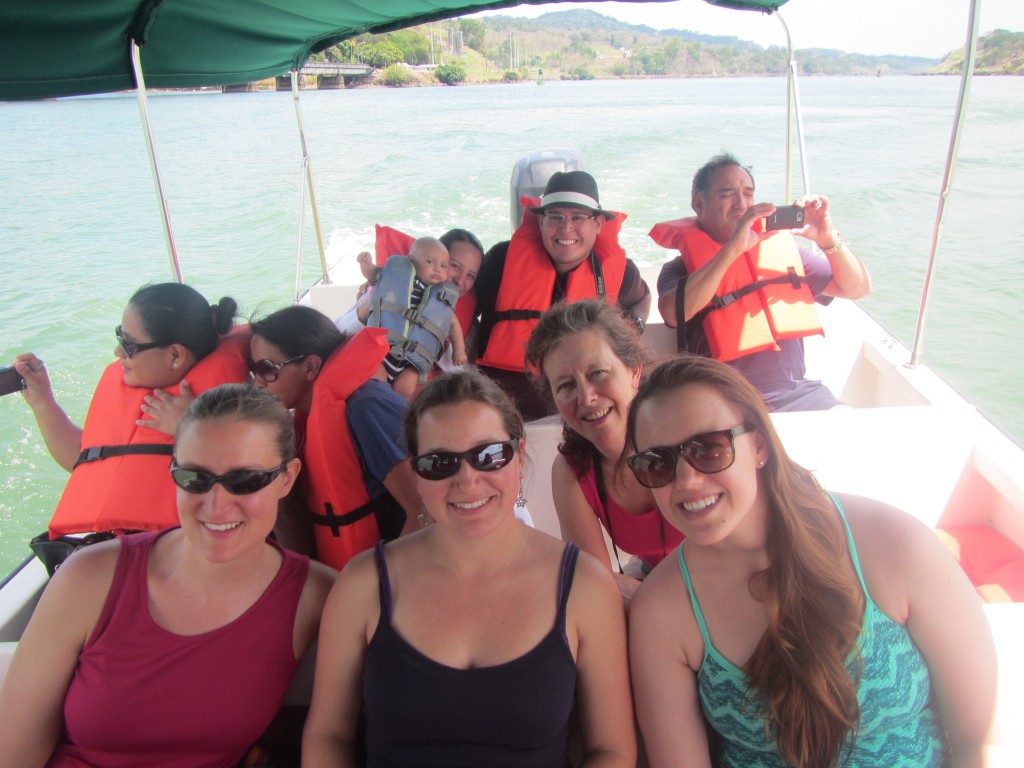
Cruising the Panama Canal. From left: Kristen Larson, Lina Ceballos, Linda McCann and Brianna Tracy.
March 17
Today we make the trek to the other side of Panama and the other ocean, the Caribbean. The Canal is only 50 miles long and the journey by car takes us about an hour through the jungle, but it is like entering another world. We are staying at the Smithsonian’s marine station at Isla Galeta, right at the mouth of the Canal. Colon is a big, pushy city, and the Port is massive. Galeta is one of the last areas around Colon where the mangroves remain relatively undisturbed and the animals can live in peace and quiet. The lab itself is a small building perched on the edge of the sea, literally. The reef lagoon is just below our windows and we are surrounded by mangroves on both sides. An enchanting spot!
March 18
We do Panama Port today. Our plates are hanging on the docks of an old marina that has long been abandoned to the port. The area is fenced off and there is no way to access it except by boat. The boat we will use is high and dry and I am wondering how they will get it in the water. Many people appear one after another, one arrives to supervise, another arrives by car with the motor and still another drives up in a back hoe. Four guys lift the boat and place it on metal rollers. Then, the back hoe takes over and pushes the boat into the water. I feel like I’ve stepped back in time and I’m witnessing the very methods our ancestors on Easter Island must have used to erect their impressive statues, if you substitute the back hoe for a whole lot of men with muscles! We work until almost midnight today.
March 19
We duplicate the predation experiment we did in the Pacific in the Caribbean today at a marina called Shelter Bay. We scurry to finish all of the weighing and displacing of the plates we will remove the cages from, before setting up the cameras.
March 20
I think I neglected to mention our 4-star accommodations. We stayed in containers that have been converted to adjoining dorm rooms with a bathroom between them. We share these rooms with ants, lizards, geckos and any number of other creatures that make off with our cookies and pills in the night.
March 21
The dreaded day has arrived. Today we will do Colon Container Terminal (CCT), the biggest container terminal in Colon. Past experience tells us that the plates will be heavily fouled, possibly so fouled it will be a struggle just to get them out of the water. It’s a very tricky maneuver as we are standing out over the water on giant bollards used to tie up the big ships. We are only slightly disappointed when it takes only one person to pull them up this time.
March 23
Our time in Galeta is almost up. We vow to finish all of the plates today at all costs, so we do not have to do plates tomorrow before we pack up and drive back to Panama City.

Linda McCann (left) and Kristen Larson take salinity and temperature readings at the dreaded Colon Container Terminal. (SERC)
March 25
Shipping day! Something like Boxing Day only so much better! We take all of those samples we’ve collected, preserved and vouchered over the last two weeks and put them into big drums, based on very exacting specifications, to ship them home. The specifications include using specific labels, exact descriptions and packaging materials due to the hazardous nature of our preservatives. Unfortunately, the specifications are interpreted differently by each individual shipping representative at FedEx. Larry in San Diego has a very different impression of what they mean, from Fred in Panama City. We could start a very lucrative betting business based on the likelihood of our shipments getting through. Well, perhaps it would not be so lucrative, since there seems to be a rather large measure of totally random chance involved each time. Will our packages get rejected today? Only the shipping gods know!
March 26
Our last day in Panama. The cameras on our experiment have captured some of the predators on film, and we’ve seen some new species on the plates–there will be interesting results from our hard work here. We head home, tired, full of great Panamanian (and Colombian) food, with images of tunicates dancing through our heads.


